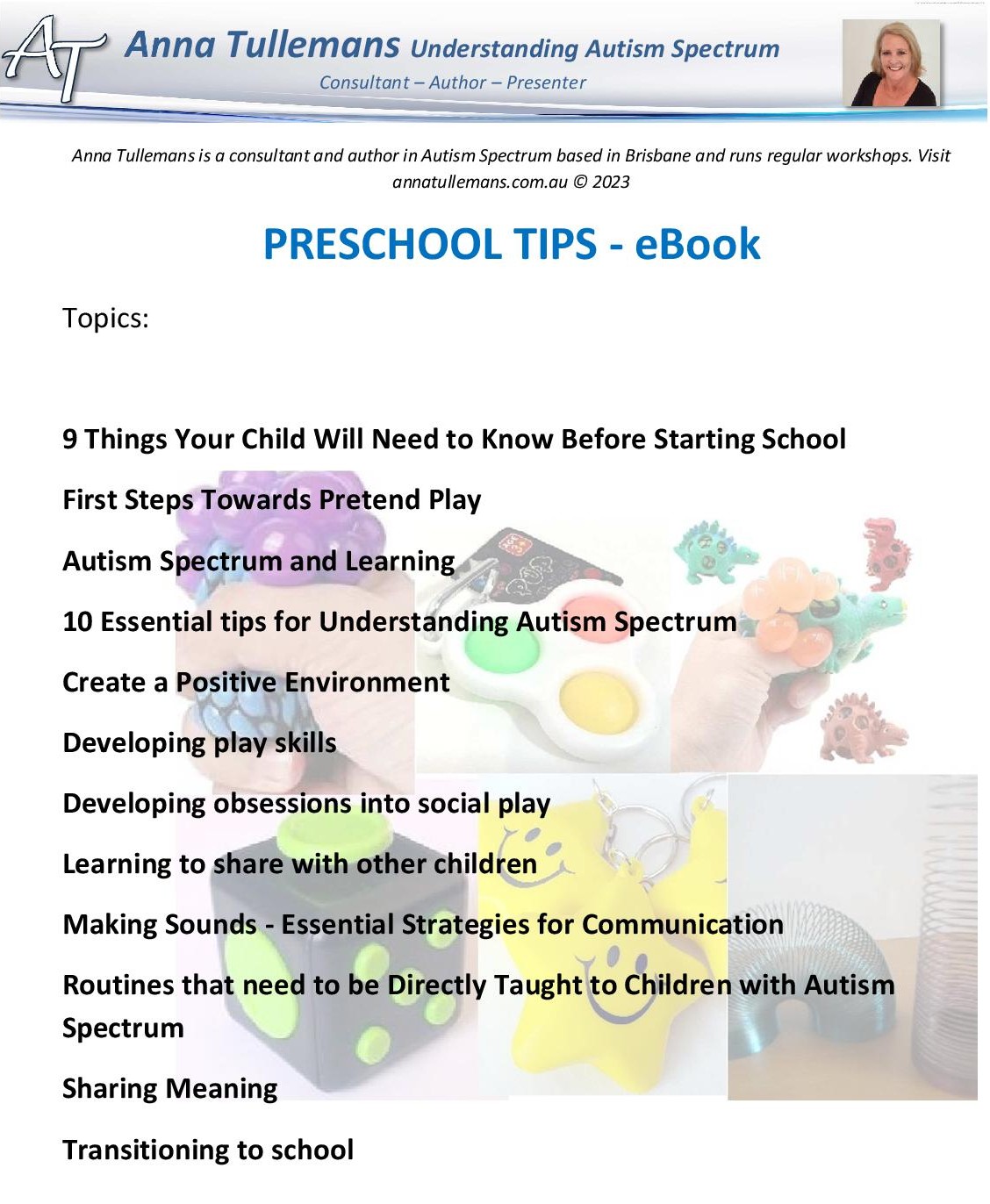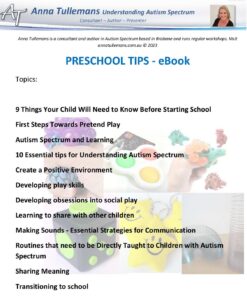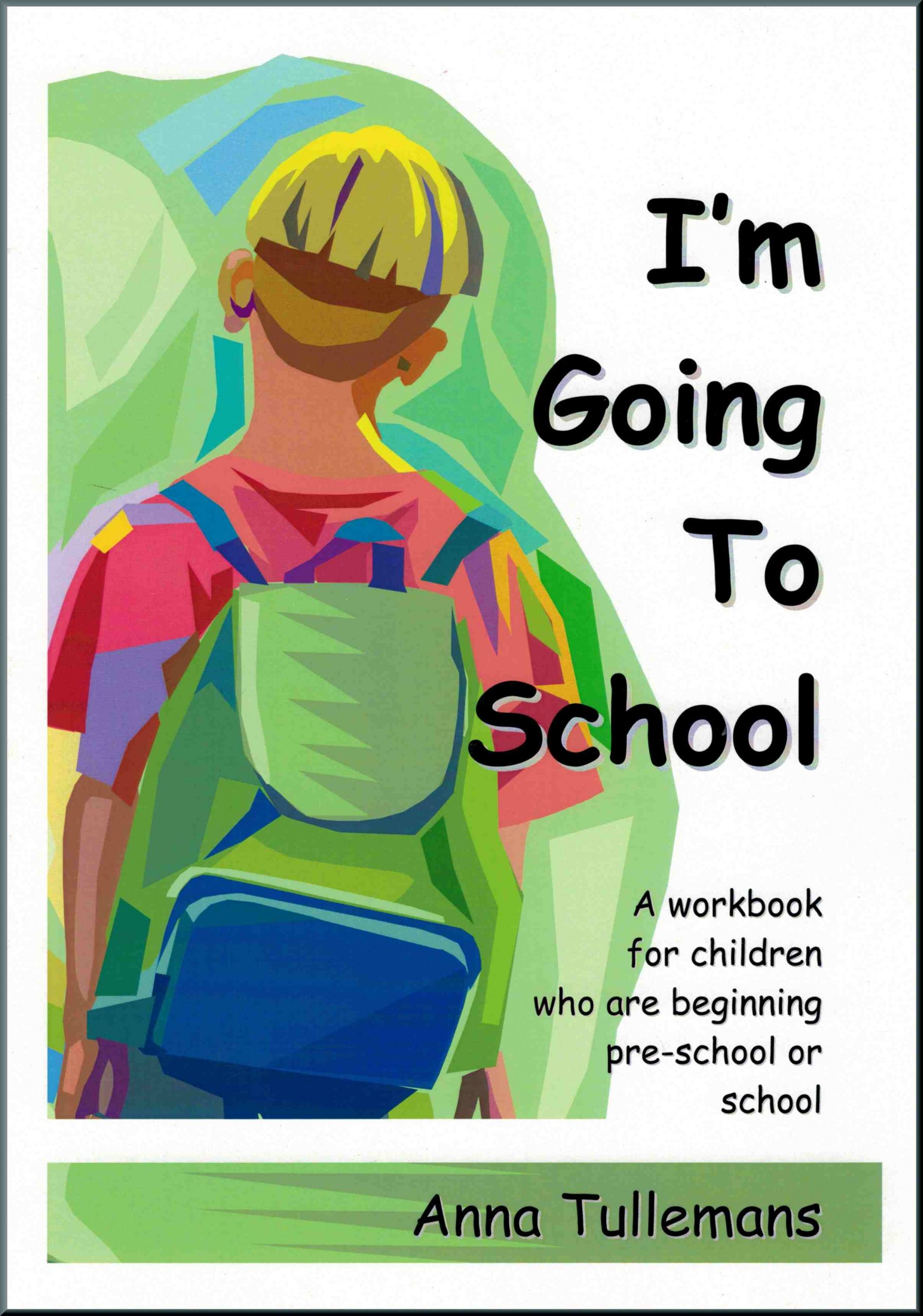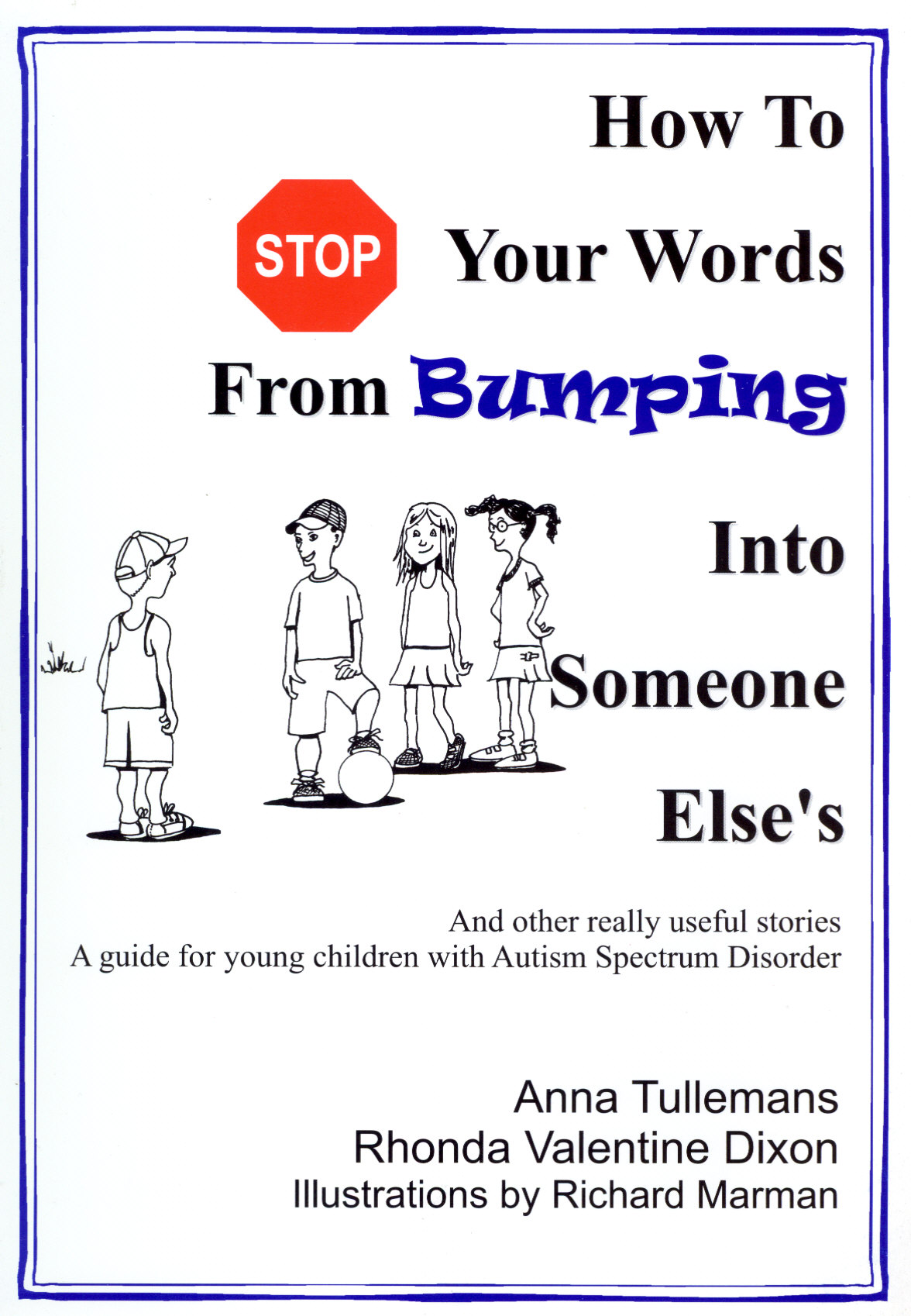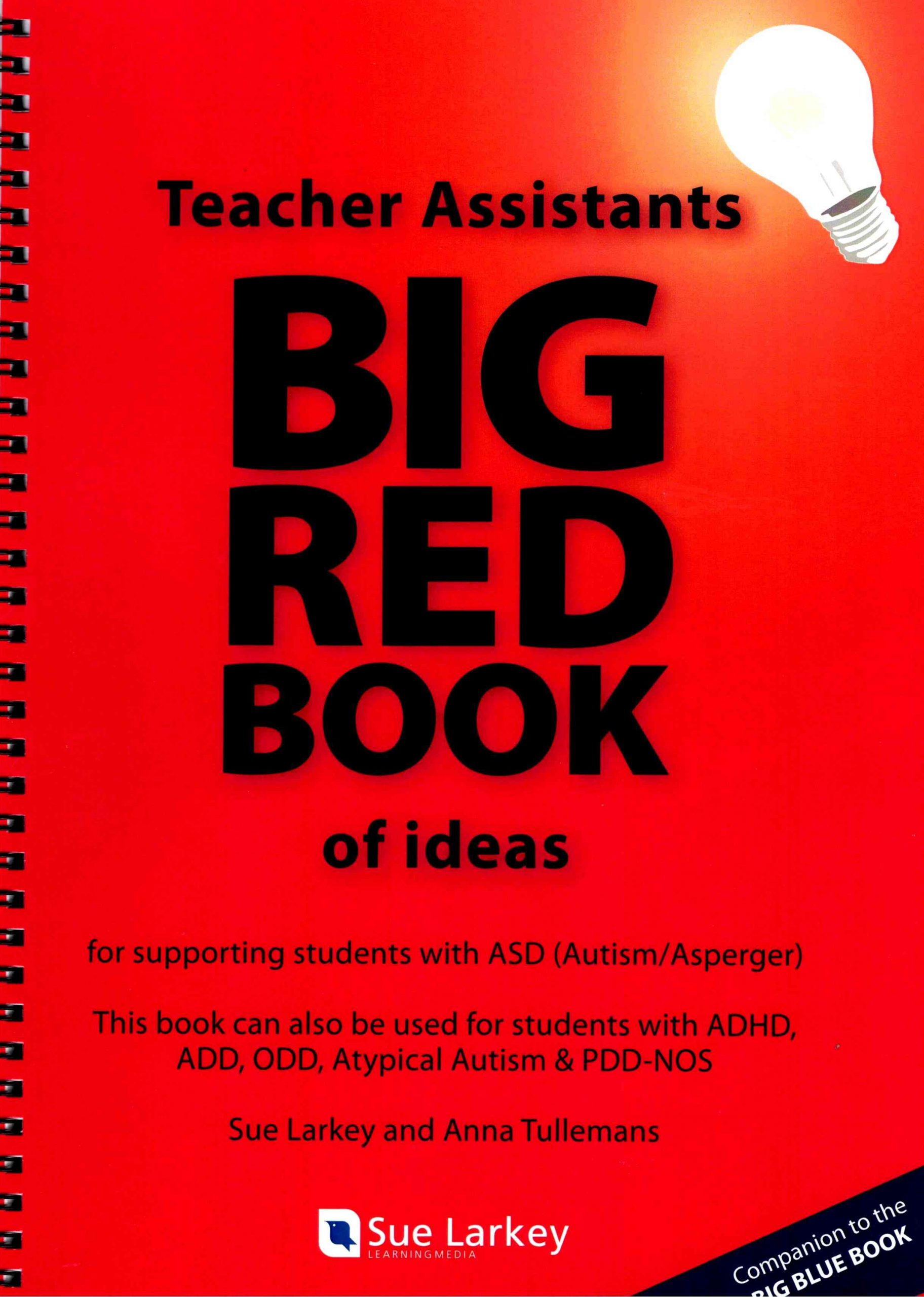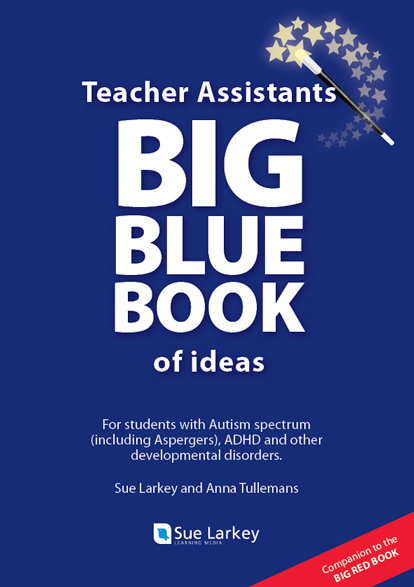9 Things Your Child Will Need to Know Before Starting School
There are several activities that your child will need to be able to do when going to school such as:
- How to eat from a lunchbox
- Unwrap sandwiches, throw rubbish in a bin, or put the rubbish back into the lunchbox
- How to cope with glad wrap!
- Identifying which are their own shoes and socks
- School uniform socks and shoes look exactly alike and many children with Autism Spectrum have difficulty with picking out their own belongings when they look similar to the others eg put a mark on the bottom of the socks and shoes
(See sensory issues in The Big Blue Book of Ideas page 45)
- Sitting on a mat
- See How to Stop Your Words from Bumping: page 14
- Waiting in a line
- See How to Stop Your Words from Bumping: page 13
- Wearing a hat
- Sitting in a chair for a certain period
- Screw and unscrew drink bottle tops
- How to dress themselves
- Following a timetable
Practice all these skills as often as you can and in context. For example, waiting in line at the supermarket. Explain to the child that you “also wait in line at school, and this is how you do it. See it’s the same as waiting in line at the supermarket”. You are putting the Wait in line into a context the child can understand.
FIRST STEPS TOWARDS PRETEND PLAY
“We bought our child a play kitchen for Christmas, but he doesn’t have a clue what to do with it.”
What to look out for:
- Some children with autism seem to handle toys and other objects purely for the look and feel of them. Whatever they play with is spun, flicked of lined up, and they may have no interest in what the things actually
- Some do show an interest in toys such as tea sets, cars and garages, toy irons etc. They may understand what these toys are meant to be, and how to use them. Usually though, even if they go through a sequence of activities, there is no imaginative story.
- Pretend play often starts off as a form of copying. Children with autism may learn to play with a toy in a particular way that they’ve been shown. It may be much harder for them to work out for themselves new ways of playing.
Things to try
- Take the child through a number of steps:
- Bake a cake together in your kitchen.
- Pretend to bake a cake with the real equipment in the kitchen.
- Move the play kitchen into your kitchen and pretend to bake a cake using real pans etc, but put it into the pretend oven.
- In your kitchen pretend to bake a cake with play equipment using the play kitchen.
- Move the play kitchen back to its normal play area and pretend to bake a cake.
- While going through the steps above, use the word ‘pretend’. Say, ‘Let’s pretend to make a cake’.
- Every child will go through the stages at different rates. Work at the child’s own pace.
- You will need to repeat this process for cooking other things as well.
Autism Spectrum and Learning
What makes you uncomfortable?
Spiders
Snakes
Squeaky pens
Feeling cold
Not understanding what is expected of you
What makes Autism Spectrum people uncomfortable?
Too many people
Feeling hot
Too many words
No alone time
Barriers to learning
Why do I need to learn this?
Not understanding what is expected
Inability to problem solve
Not knowing how or when to ask for help
Being Mr or Miss Perfect
Inability to generalise
Change
Stress
Other people’s assumptions
Key Strategies
Provide predictability
Simplify verbal language
Give time to process information
Provide visual reminders
Provide guidelines
Minimise sensory distractions
Provide problem-solving skills
10 Essential tips for Understanding Autism Spectrum
- Autism Spectrum students don’t have to look at you all the time.
- Reason: They find looking and listening at the same time hard to do.
- Give them time to answer any of your questions.
- Reason: They have slower processing time. Sometimes it can take them up to a minute to formulate the answer in the correct sequence.
- If they feel pressured they will answer with stock standard answers.
- Reason: They know it will get them out of trouble quickly. This may include: “I don’t know”, “yes”, “maybe” and often this isn’t their true answer!!
- They often don’t “generalise” information between people and places.
- Reason: Homework for teacher ‘x’ is in the yellow basket but for teacher ‘y’ it’s to be placed in the green basket.
- They find organisation of their school equipment very difficult.
- Reason: They are best with one folder with everything inside. Limit the number of pencils, pens etc.
- Limit their choices and be very specific with choices.
- Reason: They find choices overwhelming and are often concerned with making a wrong choice due to their difficulty with problem solving.
- Be as clear, concise and concrete as possible.
- Reason: People with Autism Spectrum have difficulty with abstract thinking.
- Avoid verbal overload.
- Reason: They are visual learners and verbal information takes them longer to process and retain.
- Avoid verbal arguments by redirecting them to what they should be doing. Eg “Start your work”.
- Reason: They often enjoy verbal arguments.
- Asperger people need positive feedback to know they are on the right track.
- Reason: Because of their fear of failure and they want to be Mr or Miss Perfect.
CREATE A POSITIVE ENVIRONMENT
I love routine and order
- Help me to keep things in the right order
- Show me how to put things carefully back on the shelf
- Show me pictures of what you want me to do
Sometimes pictures help me to know what to do
- Show me pictures or show me where the pictures are on the wall
Sometimes I need to line things up
- Please don’t mess up my lines. It makes me sad and mad
I like things to happen exactly the same way each time
- When you do things the same way, I understand you better and I remember what to do
I get confused with some words
- Please tell me exactly what you and say what you mean
- “It’s raining cats and dogs” really means, “It’s raining very heavily”
- “It’s a piece of cake” really means, “It’s very easy”
Developing play skills
Before you start
- The way in which children with autism play can be very unusual. Progress can be very slow. Pretend play may not develop, or at least not in the same way as for other children.
- The play of children with autism is often taken over by their need for ‘sameness’. Play becomes another sort of repetitive activity, which can block out other people and cut down on all the opportunities for learning that play usually brings.
- An important aim is to encourage more variety in children’s play so that new experiences and learning are made possible. This also increases the child’s enjoyment and satisfaction. We need to remember that play isn’t just about learning. It’s also about fun.
- Children with autism also need to learn how to play with They need to learn that people can be interesting and fun. Again, this opens up a whole range of new experiences and opportunities to learn.
- A longer term, but very difficult aim, is to help the child towards pretend and imaginative play. They need to be able to think flexibly in order to hold in mind two different things at the same time: what a thing is and what it is standing for.
Developing obsessions into social play
“My child spins everything he gets his hands on and he cuts us out completely.”
What to look out for:
- It may not be why they started in the first place, but repetitive activities and obsessions of all kinds may be ways of blocking out people. People make demands, or are just puzzling, so the child tries to block them out.
- Unfortunately, blocking out people cuts the child off from some very important types of learning.
- Repetitive activities and obsessions can range from simple physical activities, such as spinning or flicking objects, through to wanting only to talk about astronomy or vacuum cleaners.
Things to try:
- Join the child in his/her play.
- Move from playing alongside him to swapping toys between you. Watch for their awareness that you are there and are also spinning things.
- You need to move towards sharing an object which spins. Once you are sure the child is aware of you and your ‘spinner’, try having one ‘spinner’ between the two of you. To start with, his/her turn will need to be a lot longer than yours, but slowly build up your turn and reduce their’s.
Learning to share with other children
“My son lets me play alongside him
but he won’t allow his little sister anywhere near him.”
What to look out for:
- Often, a child with autism plays with objects to block out other people. Sometimes the child just does not seem to be aware of the existence of other people.
- They may allow others to play alongside and may even notice them from time to time but may reject any attempt by another child to play with them.
- When the child involves others in play, it may be very much on their terms. They may want them to take part in a very limited and repetitive way.
- Children with autism often find being with people quite stressful. They may need time to be alone after any session where you have tried to encourage sharing.
Things to try:
- Set up a play situation in a large space where both children can use the equipment but be apart from each other. A playground might be a good space to start.
- When you find something the child really likes, see of you can move his sister closer, for example on a roundabout. You could start by sitting the children opposite each other. Then move them side by side for a short time, maybe just for one quick spin to start with.
- Encourage the child’s sister to copy what he is doing without actually playing with Tell her, ‘It’s a copying game’.
Making Sounds
Essential Strategies for Communication
My child doesn’t babble now, although he used to.
He sometimes makes noises but they don’t sound like speaking.
What to look out for:
- When they are younger, children with autism may babble. Later on the babbling may disappear completely, or may not develop into speech – like sounds.
- Some may seem to chatter to themselves at times, but not as if ‘talking’ to someone. They rarely imitate someone.
Things to try:
- To encourage air to come from the lungs through the mouth, play blowing games with bubbles, balloons or pieces of tissue. Use musical instruments, windmills etc, If the child is not ready to copy you, see if he will watch you. Also see if he ever tries out things when you are not watching him.
- Encourage lip movements. If the child is happy looking in a mirror, or sitting on your knee facing you, encourage the child to explore your lips and face by touching and looking. Pull different faces. Change the shape of your lips. Put your tongue in and out, and watch to see if the child will copy you.
- To encourage the use of the tongue, try licking activities with sweets and ice cream
- To encourage the use of voice, use sound activated toys.
- Don’t forget to use a higher and /or lower pitch and a louder or quieter song t keep the child’s interest.
- If the child is interested in words and letters, use these to encourage sound making. Try saying the sounds of the letters as you write them.
Routines that need to be Directly Taught to Children with A utism Spectrum
- How to ask for help
- How and when to sharpen pencils
- What and when to throw away and where
- How to ask to go to the bathroom
- How to obtain school supplies when they forget to bring them to class
- How and when to hand in homework
- How to pass out papers
- How to organise materials on their desk
- How to line up for lunch, recess or to go into class
- How to walk down the hall in a line with other students
- How to get ready to transition from one activity to another within the classroom
- How to get ready to transition to another activity that is not within the same class
- How to get ready for recess, or lunch
- How to get ready to go home
Sharing Meaning
“I hold things up for my child to look at so that he knows what I’m talking about, but I don’t think he connects the ‘thing’ with what I’m saying.”
What to look out for:
- Some children with autism may use an object for a repetitive activity like tapping. However, they may give no sign of knowing what the object is, or what it can be used for.
- Other children just repeat words they have heard without seeming to attach them to a particular object or picture. They appear to be practicing speaking, but they are not communicating with anyone else.
- Some children with autism may take no notice when an adult tries to draw their attention to an object.
- They may not show things to people around them, or look towards them to gain their interest.
Things to try:
- Copy the child’s actions to help him understand that you are interested in what he is doing. This will encourage him to do the things to show
- Encourage him to watch you ‘showing off’ with silly hats or funny clothes. You could try using face paint and then making different faces to him.
- Use photographs, or a mirror, to encourage the child to look at you, himself or other people.
- Show him things you have done. Point out how things work.
- Use ‘hiding and finding’ games to build up the child’s interest in things you are talking about. Trying putting things down a long tube and waiting for them to appear. Talk about the objects as it disappears and as it re-appears.
- When he has learned to understand a pointing gesture, point to the things you are talking about and say, ‘Jonathan, look …’.
- When you talk to the child, make sure he knows what it is you are speaking about. Draw his attention to it, by sticking a word or a picture on the object.
- Use the same word or phrase each time you talk about a particular object, action or event. Don’t be tempted to say too much. Keep what you say simple, and use pauses to encourage the child to look at you and the thing you are talking about.
- Teach him how to show things to people. If he understands simple instructions say, ‘Show it to granddad’. If he needs help, walk with him, guiding his hand to show things to people.
Transitioning to school
It’s important to have a transition programme for your child because it will:
- Provide good structure for our child
- Lessen the anxiety levels from not knowing what’s happening next
- Increase motivation
- Help to identify necessary supports such as a teacher aide, safe places etc.
5 top tips that children should know before they start school
- How to open their lunch boxes and unwrap their lunch, especially if wrapped in cling wrap. Practice this often.
- How to dress themselves (use visuals at home)
- Help children get to know their new environment
- Where are the ‘safe’ toilets, where are the out of bounds areas
- Have a buddy system or mentor in place
5 top tips for parents to begin a transition process
- Make a picture book showing what is changing and what is staying the same
- Make up a profile of your (1 x A4 sheet)
- Information should include:
- Strengths of your child
- Challenges of your child
- What may trigger a meltdown
- Best way to approach your child when he is having a meltdown
- Any sensory issues your child may have such as noise, smell, touch etc
- Make sure all teachers at the school know about your child
- Wash the uniform many times before the child has to start wearing it
- Try the uniform on many times for the child to become used to the feel of it
Organising a transition programme can be very time consuming, however this is going to create a child who is much calmer and who is more ready to learn in the new environment.

